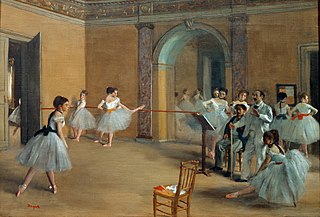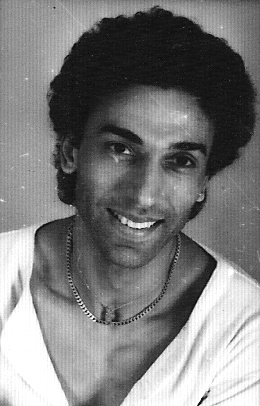
Ballet is a type of performance dance that originated during the Italian Renaissance in the fifteenth century and later developed into a concert dance form in France and Russia. It has since become a widespread and highly technical form of dance with its own vocabulary. Ballet has been influential globally and has defined the foundational techniques which are used in many other dance genres and cultures. Various schools around the world have incorporated their own cultures. As a result, ballet has evolved in distinct ways.

The Vaganova method is a ballet technique and training system devised by the Russian dancer and pedagogue Agrippina Vaganova (1879–1951). It was derived from the teachings of the Premier Maître de Ballet Marius Petipa, throughout the late 19th century. It was Agrippa Vaganova who perfected and cultivated this form of teaching classical ballet and turned it into a viable syllabus. The method fuses elements of traditional French style from the romantic era with the athleticism and virtuosity of Italian Cecchetti technique. The training system is designed to involve the whole body in every movement, with equal attention paid to the upper body, legs and feet. Vaganova believed that this approach increases consciousness of the body, thus creating a harmony of movement and greater expressive range.
This is an alphabetical index of articles related to dance.

Classical ballet is any of the traditional, formal styles of ballet that exclusively employ classical ballet technique. It is known for its aesthetics and rigorous technique, its flowing, precise movements, and its ethereal qualities.

Russian ballet is a form of ballet characteristic of or originating from Russia.

Agrippina Yakovlevna Vaganova was a Soviet and Russian ballet teacher who developed the Vaganova method – the technique which derived from the teaching methods of the old Imperial Ballet School under the Premier Maître de Ballet Marius Petipa throughout the mid to late 19th century, though mostly throughout the 1880s and 1890s. It was Vaganova who perfected and cultivated this form of teaching the art of classical ballet into a workable syllabus. Her Fundamentals of the Classical Dance (1934) remains a standard textbook for the instruction of ballet technique. Her technique is one of the most popular techniques today.
Mansur Kamaletdinov was a Soviet-born ballet dancer, teacher, ballet master and choreographer of classical ballet and classical character dance.
Rostislav Vladimirovich Zakharov was a Soviet and Russian choreographer, ballet dancer and opera director. He was a professor at the Russian Institute of Theatre Arts (GITIS) in Moscow (1946–1983). Zakharov was awarded the Stalin Prize twice and designated the People's Artist of the USSR (1969).

Ballet is a formalized form of dance with its origins in the Italian Renaissance courts of 15th and 16th centuries. Ballet spread from Italy to France with the help of Catherine de' Medici, where ballet developed even further under her aristocratic influence. An early example of Catherine's development of ballet is through 'Le Paradis d' Amour', a piece of work presented at the wedding of her daughter Marguerite de Valois to Henry of Navarre. Aristocratic money was responsible for the initial stages of development in 'court ballet', as it was royal money that dictated the ideas, literature and music used in ballets that were created to primarily entertain the aristocrats of the time. The first formal 'court ballet' ever recognized was staged in 1573, 'Ballet des Polonais'. In true form of royal entertainment, 'Ballet des Polonais' was commissioned by Catherine de' Medici to honor the Polish ambassadors who were visiting Paris upon the accession of Henry of Anjou to the throne of Poland. In 1581, Catherine de' Medici commissioned another court ballet, Ballet Comique de la Reine, however it was her compatriot, Balthasar de Beaujoyeulx, who organized the ballet. Catherine de' Medici and Balthasar de Beaujoyeulx were responsible for presenting the first court ballet ever to apply the principles of Baif's Academie, by integrating poetry, dance, music and set design to convey a unified dramatic storyline. Moreover, the early organization and development of 'court ballet' was funded by, influenced by and produced by the aristocrats of the time, fulfilling both their personal entertainment and political propaganda needs.
Lisa Teresita Pacheco Macuja-Elizalde is a Filipino prima ballerina. In 1984, she became the first foreign soloist to ever join the Kirov Ballet. In the Philippines, she is the Artistic Director and CEO of Ballet Manila and was the Vice-Chairman of the Philippine UNESCO National Commission. She was also the Commissioner of the National Commission on the Role of Filipino Women. Macuja-Elizalde is also Directress and faculty member of the Lisa Macuja School of Ballet – a training center for ballet professionals who are steeped in the Russian Vaganova method. She is also the founder of Project Ballet Futures (PBF) - an internationally recognized community scholarship program that provides training and performance opportunities for deserving public school students.
British ballet is most recognised for two leading methods, those of the Royal Ballet School and the Royal Academy of Dance. The identifying characteristic of British ballet is the focus on clean, precise technique and purity of line that is free of exaggeration and mannerisms. The training of dancers in Britain is noted for its slow progression, with a great deal of attention paid to basic technique. British ballet methods operate on the principle that establishing correct technique and strength slowly makes it much easier for the student to adapt to more difficult vocabulary and techniques later on.

Benjamin Feliksdal is a Dutch ballet dancer. He has danced as soloist and principal dancer with Het Nederlandse Ballet 1960, Het Nationale Ballet 1961/1971, and with the Royal Ballet of Flanders 1972/1973.
The Guangzhou Ballet Troupe is a classical ballet company based in Guangzhou, China. In addition to works from the classical European ballet repertoire, the company performs works of classical and contemporary Chinese ballet. The company is one of the top four ballet companies in China. It was founded in 1974, and is currently headed by dancer Zhang Dandan. The company tours internationally.
Leonid Veniaminovich Yakobson, whose last name is sometimes spelled Jacobson, was a Jewish ballet choreographer from Russia. He was the founder of the Yacobson Ballet.

Peggy Willis-Aarnio was an American choreographer, historian, author and teacher of classical ballet. She was a professional dancer in the early 1970s with the Ft. Worth Ballet in Fort Worth, Texas. She was the first American ballet teacher to be sanctioned as a "Certified Practitioner and Teacher of the Teaching Method of Classical Ballet" by the Vaganova Academy in Saint Petersburg, Russia.
Boris Knyazev was a Russian ballet dancer and choreographer.

Grishko Ltd. is a privately held manufacturer of dance shoes, wear and accessories. The company was founded in 1989 by Nikolay Grishko in Moscow, Russia. It is an international company with four factories in Europe and sales in over 70 countries. The company began as a pointe shoe manufacturer and now produces many types of dance shoes and wear.

Roudolf Kharatian is an Armenian ballet dancer, choreographer, teacher, director and painter. He is a People's Artist of Armenia (2012). He is the Principal Choreographer and artistic director of the National Ballet of Armenia at the Spendiaryan National Opera and Ballet Theatre.

Janet L. Springer is an American ballet dancer, artistic director, choreographer, and specialist in classical ballet. She was a professional dancer in the early 1970s with the Oklahoma City Ballet. She is a ballet pedagogue, specializing in the method of teaching classical dance; the six and eight year program of ballet training developed by Agrippina Vaganova, and Vaganova's assistant, Vera Kostrovitskaya.
Edina Papo, born Hadžirović, on 9 April 1958 in Sarajevo. She was the artistic director of the Sarajevo Ballet. As a choreographer and pedagogue, she has made great contributions to the redevelopment and renewal of ballet art in post-Bosnian War Sarajevo, that is, since 1996. She completed her ballet education at Vaganova Academy of Russian Ballet and N. A. Rimsky-Korsakov Saint Petersburg Conservatory in St. Petersburg. She enriched the repertoire with performances closer to the contemporary trends of modern ballet dance and current European theatre.










